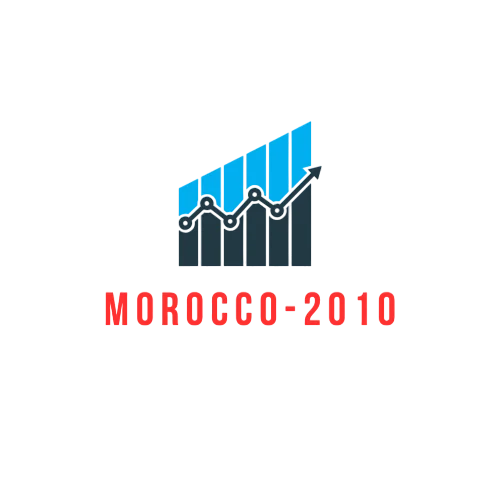Ever wondered why some countries seem to thrive while others struggle? It all boils down to how they manage their resources. Enter the fascinating world of economic systems, where the rules of the game can make or break a nation’s prosperity. From the bustling marketplaces of capitalism to the structured plans of socialism, understanding these systems is crucial for anyone who wants to make sense of the global economy.
In this article, we’ll dive into the four main types of economic systems. Each one has its quirks and benefits that shape the way people live and work. So buckle up and get ready for a ride through the economic landscape, where you’ll discover how these systems impact everything from your morning coffee to international trade. Who knew economics could be this entertaining?
Table of Contents
ToggleOverview of Economic Systems
Economic systems define how resources are allocated and goods are produced. They shape decision-making processes in societies, affecting everything from individual livelihoods to global trade dynamics. Four main types form the backbone of economies worldwide.
Capitalism emphasizes private ownership and free markets. In this system, individuals or businesses own resources and make decisions driven by profit motives. Competitive markets encourage innovation and efficiency, leading to a wide range of products and services.
Socialism prioritizes collective ownership and equal distribution of resources. Central planning typically governs this system, aiming to reduce income inequality and provide universal access to essential services. Governments often manage key industries to ensure equitable access for all citizens.
Mixed economies incorporate elements of both capitalism and socialism. They allow for private ownership alongside significant government intervention in certain sectors. This blend aims to balance economic freedom with social welfare, creating a system that addresses market failures while promoting growth.
Traditional economies rely on customs and traditions to shape economic decisions. Often found in rural or underdeveloped areas, these systems depend on agriculture and barter. Economic activities are based on historical practices rather than market forces or government regulations.
Understanding these economic systems provides insight into how societies function. Each type offers unique advantages and challenges, influencing prosperity and the quality of life. Through this lens, one can appreciate the diverse approaches to resource management across the globe.
The Four Types of Economic Systems
Economic systems shape how societies manage resources. Four distinct types exist: traditional, command, market, and mixed economies.
Traditional Economic System
Traditional economies thrive on customs and historical practices. These systems often revolve around agriculture and subsistence farming. Rural communities typically favor such methods, relying on ancestral knowledge to guide their economic activities. Resource distribution usually occurs through barter, reinforcing community ties. Self-sufficiency plays a vital role in meeting basic needs, as families produce essential goods and services.
Command Economic System
Command economies rely on centralized control of resources and production. The government often dictates economic activity, determining what goods and services are produced. In such systems, individual choice remains limited since authorities enforce regulations on resource allocation. Countries like North Korea exemplify this model, where state ownership prevails. While this can streamline decision-making, it may also stifle innovation and responsiveness to consumer needs.
Market Economic System
Market economies emphasize individual choice and free markets. Producers and consumers determine the prices of goods and services through supply and demand. In such systems, competition fosters innovation and efficiency. Countries like the United States exemplify market-driven approaches, where private ownership exists alongside limited government intervention. This flexibility allows for diverse products and services, catering to varied consumer preferences.
Mixed Economic System
Mixed economies incorporate elements from both market and command systems. These approaches blend private enterprise with government regulation. Many countries, such as France and Canada, utilize this system to balance economic freedom with social welfare. The government may intervene to provide public services and address market failures. This combination aims to harness the benefits of both systems while ensuring equitable resource distribution.
Comparison of Economic Systems
Capitalist economies prioritize individual choice and market-driven mechanisms. Entrepreneurs drive innovation, investment, and competition. For instance, the United States exemplifies this system, where minimal government intervention allows businesses to thrive on demand and supply dynamics.
Socialist economies focus on collective ownership and resource allocation by the government. They aim to reduce economic inequality and ensure equal access to essential services. Countries like Sweden provide extensive welfare programs, financed through progressive taxation.
Command economies centralize control over production and distribution. The government determines what goods to produce and their prices. North Korea serves as a stark example of this system, where individual economic freedom is severely restricted.
Mixed economies incorporate elements from both capitalism and socialism. These systems strive to balance economic growth with social welfare. Canada showcases this approach, combining private enterprise with government regulations to protect citizens’ interests while fostering economic opportunities.
Each economic system impacts individual livelihoods and national prosperity. They vary in terms of ownership models, resource management, and government roles. A society’s choice of economic system shapes its unique economic landscape and overall development.
The exploration of economic systems reveals their profound impact on societies and individual lives. Each system—from capitalism to traditional economies—offers distinct advantages and challenges. The choice of an economic system shapes a nation’s approach to resource management and influences overall prosperity. Understanding these systems equips individuals with valuable insights into global trade dynamics and societal functioning. As countries navigate their economic paths, the interplay between these systems will continue to evolve, reflecting the diverse needs and aspirations of their populations.





